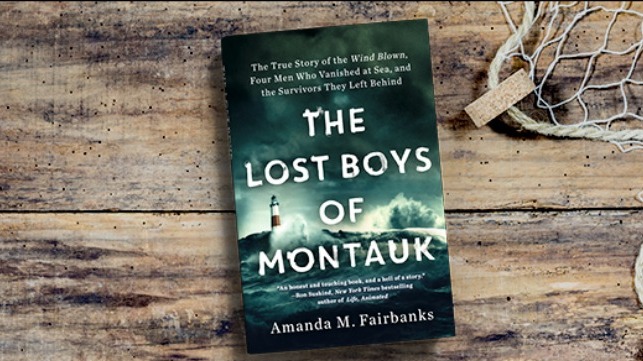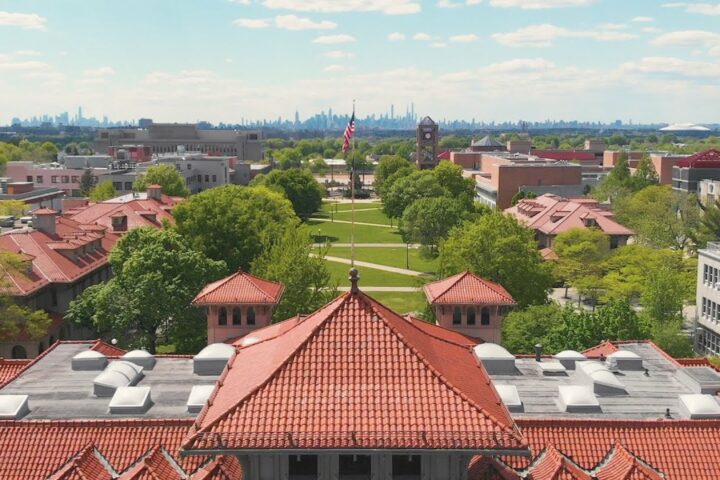In 1984, the commercial fishing ship, the Wind Blown, left Montauk Harbor to never return. What seemed like a routine offshore fishing expedition turned into a tragedy that is now a core piece of local folklore. The Lost Boys of Montauk tells the true, heart-wrenching tale of four men lost at sea.
After a few days of embarking on the Wind Blown, the ship and crew suddenly vanished forever. They were fighting for their lives and were victims of a nor’easter storm. The Wind Blown and the bodies of the crew were never recovered. We read about the victims of the storm such as Michael Stedman, Captain of the Wind Blown, was a loving husband with three sons. David Connick was an avid surfer from an affluent family. Michael Vigilant was only 19 years old when he proposed to his girlfriend before heading out to sea for the last time. Scott Clarke was the youngest of the team, an 18 year old determined to make his mark.
The Wind Blown disappearance was an awful loss to their families and the East End as a whole. It is truly a tragic story that shook the East End, and haunts their families to this day. This book shows how commercial fishing is no easy task. It pushes the young and brave far beyond their limits. It is a dangerous job and one would wonder who would take up such a task and why. These men make their motives very clear, despite the risks that they take.
It’s not just the story that drew me in, but also the clear writing, wonderful storytelling, and photos. Fairbanks obviously did her research and uncovered the lives of the deceased. This is more than just a story about a sunken vessel and men lost at sea. It talks about the lives of the Captain and three mates, their families who are in desperate need of closure and a recovering community. It is driven by first-hand accounts of their families and friends who combat immense grief, in the big and small ways, that will touch lives for generations to come.
Even decades later, everyone who was interviewed could remember that day so clearly. This shows how much of an impact it had on their lives. Photos are dispersed throughout the book which only makes the story more real, almost giving the reader an intimate relationship with the people. This story would be a phenomenal documentary film. With many of their immediate relatives alive today, as well as friends, neighbors, and townspeople, presenting this information in another medium would be doable, if not already necessary.
Although, there are quite a few fillers, some which may be too personal about the lives of the missing men. There were moments when I thought about the ethics of journalism. While it is a journalist’s job to accurately record history and share it with the world, there were times when it felt disrespectful and invasive to share such information. The book was teetering on just enough information and “TMI” moments. Additionally, many of the people mentioned seemed to blend towards the end with the constant back and forth of the different people and times. It lacked some coherence because each chapter jumped from one time period to another.
You know the Hamptons? Think again. From a small fishing community with working-class families to a playground for the wealthy, Fairbanks touches on the social divide. This tale exposes the lives of true locals. Look past the luxurious Hamptons and get a taste of local life. Famous and wealthy tourists frequent the Hamptons for its horse shows, estates, and most importantly, the pristine seaside. Little do they know about the sea’s powerful force, one to be feared and loved.
As someone who grew up in the area, the references to local shops, landmarks, and streets that I know and love, like Gosman’s and Ditch Plains, make the story even more real. Every place mentioned I could see in my mind and think of my own memory there. The familiarity of the area makes this book a must-read for East End locals especially.
The Lost Boys of Montauk shows the timeless and horrific tragedy of resilience, love, and sorrow. Fairbanks wonderfully captures the raw story of four men who perished at sea and life after such an incident. It is an unfinished story that will neither be forgotten nor fully understood, yet beautifully finds a way to bring a torn community together.











